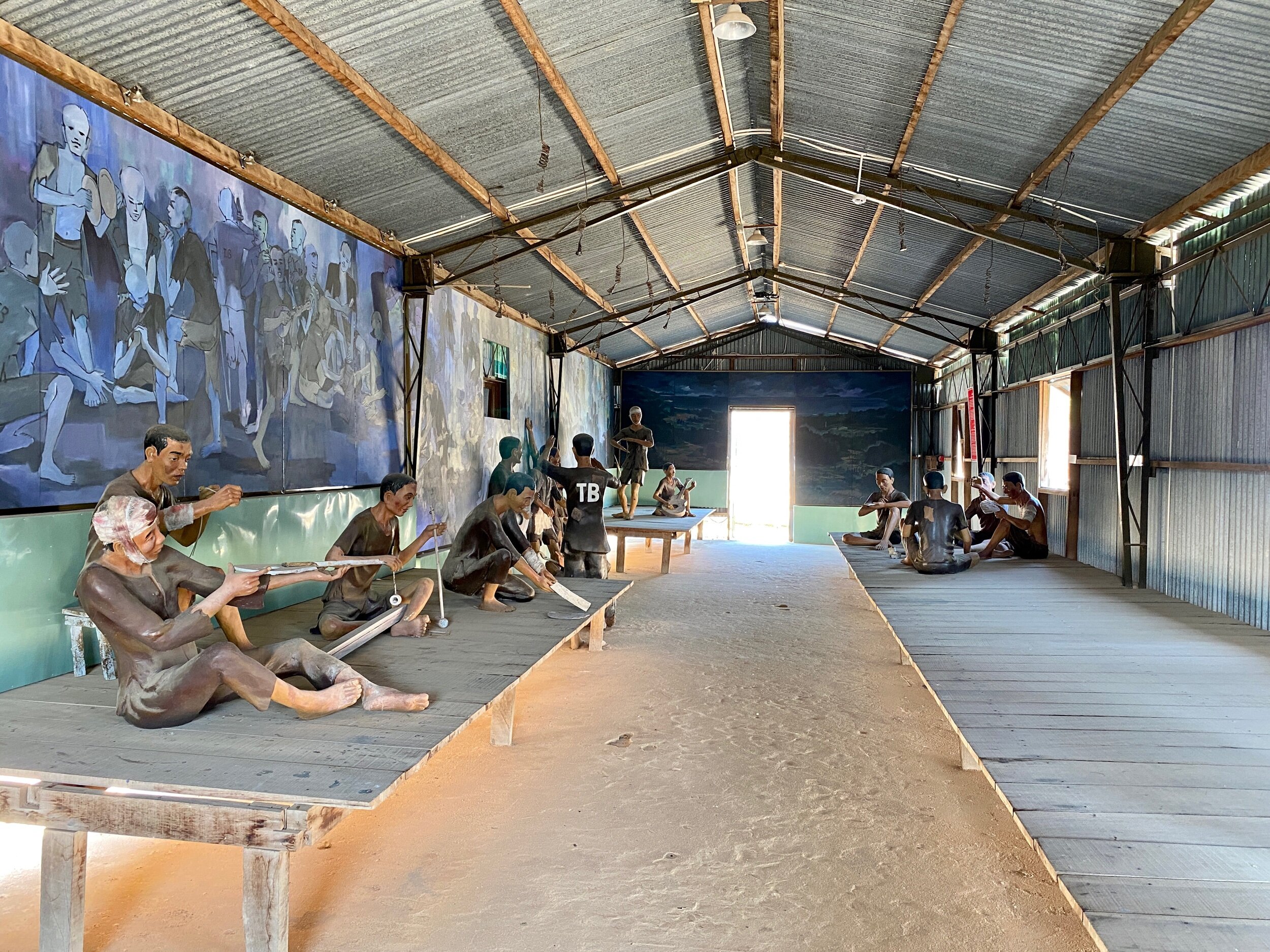Some places make you want to scream and cry, and the “Coconut Prison” is one of them. As an American, my concept of serving time is: of course you better watch your mouth and watch your back, and you may endure abuse anyway; but you are assured of medical care, a roof over your head, a pillow, clean clothes, two meals a day, a flushing toilet, a regular shower, visiting days, perhaps even a library or cable TV. It’s a lot more than free, poor, non-criminal Americans get treated to by our government.
Coconut Prison, built by the French halfway into the first Indochina War, was purportedly a POW camp run by a signatory of very recently updated Geneva Conventions. In other words, conditions here should have been equal to or better than those in present day America. In fact, this place can only be described as a torture camp, where every prisoner was horrifically and systematically abused in body and mind, with the explicit goal of preventing their ever again serving as an enemy combatant. Both incidental and prescribed deaths were common; out of over 40,000 prisoners, approximately 10% died here.
After the French left, the prison was run by ARVN and US troops until Vietnamese reunification was achieved in 1975. I was aware that POWs and political dissidents were tortured by both sides, but not even my visit to the Hỏa Lò Prison in Hanoi prepared me to learn about the heinous tortures used here. They have displays on: electrocution; clubbing out teeth and breaking jaws; nailing limbs and hacking off limbs; tiger cages; katso boxes (which I’d never heard before; “hot box” was the WW2 term my grandfather used); boiling and roasting prisoners; an awful torture involving somersaulting on a jagged metal plate . . . there were undoubtedly more that I didn’t notice or don’t recall; one can only process so much. Of course, this was all in addition to the requisite beatings and starvation.
There’s also a display on how a few prisoners managed to escape, a miracle given how heavily patrolled the camp, beaches and island were. Also, this island is not close to the mainland; even if an escapee managed to travel on foot, undetected, to the north end of the island (a 2-3 day walk), no rowboat or raft could get them to Cambodia. Escaping here meant surviving in the mountainous jungle, possibly alone, for years.
As terrible as this place is, it’s so essential that a piece of it is preserved for posterity. I cannot understand how anyone can be OK with torture, or even war more generally. Unless you are necessarily defending yourself (not your friends, economic interests or ideologies), there is no justification for war. A visit to Vietnam today reveals the toothlessness of the Communist boogeyman Americans battled for over 20 years. People and politics change all the time, and life is short! I think of my father: he was lucky enough to draw 365 in the draft for Vietnam, but still died before I was eight years old. As far as I know, he never saw the world beyond the East Coast of the US. How many young people lost their lives, or were irretrievably broken, before they had a chance to live at all? For what?















